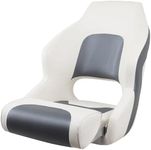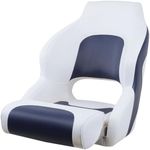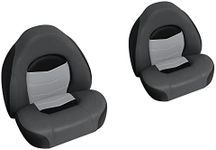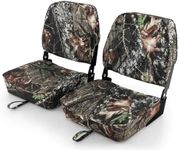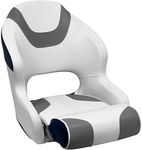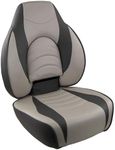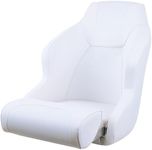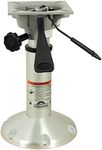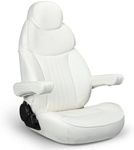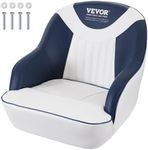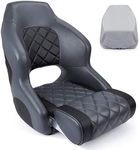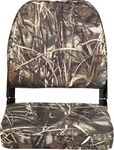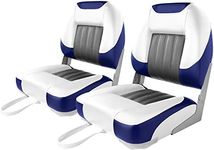Buying Guide for the Best Boat Seats
Choosing the right boat seat is important for both comfort and safety while out on the water. The right seat can make your boating experience much more enjoyable, whether you're fishing, cruising, or just relaxing. When shopping for a boat seat, it's important to consider how you'll use your boat, how much space you have, and what kind of support and durability you need. Understanding the key features will help you find a seat that fits your needs and lasts for many seasons.Seat TypeSeat type refers to the overall design and intended use of the seat, such as folding seats, bench seats, bucket seats, or pedestal seats. This is important because different types offer different levels of comfort, support, and space efficiency. For example, folding seats are great for saving space, while bucket seats provide more support for longer trips. To choose the right type, think about how you use your boat most often—fishing, cruising, or water sports—and pick a seat that matches those activities.
MaterialThe material of a boat seat affects its durability, comfort, and resistance to water and sun. Common materials include marine-grade vinyl, plastic, and sometimes fabric. Marine-grade vinyl is popular because it resists UV rays, mildew, and water, making it last longer in harsh conditions. When comparing materials, look for those specifically labeled for marine use. If you boat in saltwater or leave your boat exposed to the elements, prioritize seats with the most weather-resistant materials.
Mounting StyleMounting style refers to how the seat attaches to your boat, such as pedestal mounts, swivel mounts, or direct-to-deck mounts. This is important for stability and the kind of movement you want from your seat. Pedestal mounts allow for height adjustment and rotation, which is great for fishing, while direct mounts are more stable but less flexible. Consider how much movement you need and the layout of your boat when choosing a mounting style.
Cushioning and SupportCushioning and support determine how comfortable the seat will be, especially on longer trips. Seats with thicker foam or ergonomic designs provide better comfort and reduce fatigue. Some seats have contoured backs or extra padding for lumbar support. If you spend long hours on the water or have back issues, look for seats with enhanced cushioning and support features.
Weight CapacityWeight capacity is the maximum weight the seat can safely support. This is important for safety and durability, as exceeding the limit can damage the seat or cause accidents. Weight capacities can vary widely, so check the specifications and choose a seat that comfortably supports the heaviest person who will use it.
Size and DimensionsThe size and dimensions of the seat affect how well it fits in your boat and how comfortable it is for different users. Larger seats offer more comfort but take up more space, while compact seats are better for smaller boats. Measure the available space on your boat and consider who will be using the seat to find the right balance between comfort and fit.
Ease of InstallationEase of installation refers to how simple it is to attach the seat to your boat. Some seats come with universal mounting hardware, while others may require specific tools or modifications. If you prefer a quick and easy setup, look for seats with straightforward installation instructions and compatible mounting systems.
